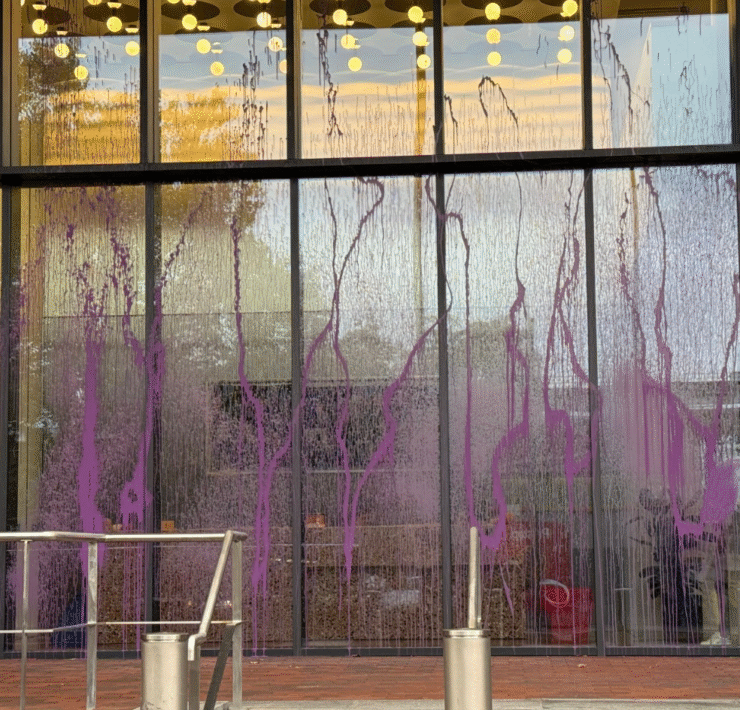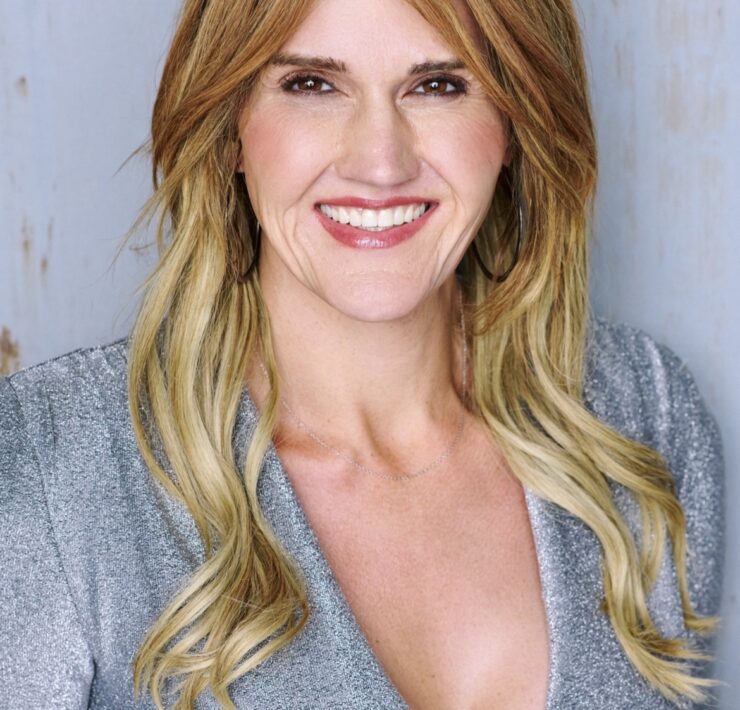The Cost of Visibility: Trans Progress and the LGBTQ Community

Keegan (they/them) is a journalist/artist based in Los Angeles.
It’s an interesting time to converse about LGBTQ progress, especially checking the news during any given week to witness what new anti-LGBTQ legislation is circulating the country.
But it’s undeniable that the community is growing. The percentage of adults who self-identify as lesbian, gay, bisexual, transgender, or something other than heterosexual has ticked up to 7.1%, according to a 2022 Gallup poll, double the percentage of 2012, when Gallup first measured it.
With the continued blossoming of our community comes all of the triumphs and trials of increased visibility, not only within the scope of society as a whole but also within the community itself.
Conversations about the LGBTQ community might have centered marriage equality or same-gender adoption in the past. As more trans and gender-nonconforming folks continue embracing themselves and living openly in the world, we’re now addressing the myriad issues that affect everyone in our community, not necessarily just the issues that affect the cisgender Ls, Gs, Bs, and Qs.
It’s very clear that non-heterosexual identities on their own are still under attack in the U.S. The amount of bills introduced throughout the country—aimed to erase conversations about queer people in history, about non-heterosexual and non-cisgender expression and identity in schools—has made that abundantly clear. But, as a whole, American society has met cisgender lesbians, gay men, and bisexuals with more acceptance, even though true equity still isn’t within reach.
A Closer Look at LGBTQ Political Representation
Let’s use openly LGBTQ elected officials as an example.
According to the last annual report from the Victory Institute published in 2021, there were 986 openly LGBTQ elected officials currently serving. While the report notes that LGBTQ people are still severely underrepresented, needing to elect another 28,116 more to achieve equitable representation, it observed a 17% increase from June 2020 to June 2021.
That increase holds true for trans and gender-nonconforming lawmakers, too. The report found a 66% increase in non-cisgender LGBTQ elected officials; a 100% increase in gender-nonconforming, genderqueer, or nonbinary elected officials; and a 71% increase in trans women elected officials.
The numbers blow the 16% increase in cisgender women and 14% increase in cisgender men, who are part of the queer community, out of the water. However, the big picture tells a different story as to who in the LGBTQ community is the most palatable for voters, or even which community members may feel the most secure in running for office in the first place.
Breaking down the genders of elected LGBTQ officials, cis men made up 55.68% of elected officials in the report; cis women made up 37.42%. Trans women made up the next largest segment when it came to gender identity, just 3.65%. The numbers continue to plummet when looking at trans men (0.51%), gender-nonconforming people (1.12%), nonbinary and genderqueer people (0.9%), intersex people (0.10%), and Two-Spirit people (0.20%).
LGBTQ People and Acclimating to Cisheteronormativity
It brings up the “just like you” narrative that persisted throughout the past several decades. Especially when LGBTQ folks had even less rights, or were in the midst of battling the AIDS crisis with little aid from the federal government, telling cisgender, heterosexual people that we’re no different from them was simply a way to climb toward equity, to show the rest of the world that queer folks mean no harm. We’re simply trying to live life with the same resources and rights every other person has.
And it seems to be largely reflected in the trajectory of LGBTQ rights over the last couple of decades. American society as a whole began tolerating queer folks based on their perceived proximity to straightness and cisness. Not to say being “tolerated” is much of a win on its own, but given the events of the past, it was something.
Think of comments like, “Yeah, they’re queer, but they aren’t ‘in your face’ about it.” For trans folks, it might be, “Wow, I totally thought you were cis!” or “You pass so well!” These comments assert that passing, or being subtly queer, is the goal, both measured by “acceptable” expression, measured by proximity to heterosexuality and cisness.
That sentiment carries over to public figures, which LGBTQ people are “allowed” to succeed in the public eye, but it can also be applied to queer individuals on a smaller scale. For queer folks with a closer proximity to the cisheteronormative ideas of gender and sexual expression, it’s just generally easier to acclimate to the rest of society.
Looking at the past several years, more trans and gender-nonconforming people are coming out than ever before. A 2016 Williams Institute study found that the transgender community in the U.S. was 0.6%, double the previous estimate from a decade prior (and surely higher today). A 2021 study from Williams Institute also found approximately 1.2 million people in the U.S. self-identified as nonbinary, or 11% of LGBTQ adults.
While we surely owe that to some of the other strides our community has made as a whole, increased visibility comes at a cost. Trans folks, and anyone embracing gender expression that strays from their assigned gender at birth, suddenly crosses a societal line. Those people are “too queer.”
And the thing is, queer and trans people ARE different than heterosexual, cis people. We have different lived experiences. It’s not a bad thing to recognize, but it doesn’t mean we shouldn’t be afforded the same respect and rights everyone else has.
Increased Visibility is a Double-Edged Sword
With more visible trans folks and representation in society as a whole came a brutal influx of anti-LGBTQ, namely anti-trans, legislation. Twenty-twenty-one surpassed 2015 as the worst year for anti-LGBTQ legislation in recent history, according to tracking and analysis by the Human Rights Campaign, and experts predict 2022 will likely surpass it.
And yes, we see bills like the aforementioned LGBTQ topic bans in schools, but in 2020, 2021, and 2022, the majority of bills targeted transgender Americans, according to an NBC News analysis.
We already know why: It’s about erasure. Society feels so threatened by the presence of people with different experiences, combatting the restrictive, Euro-centric binary structure, regardless of the abundant evidence that trans and gender-nonconforming people have always existed. Ignorant lawmakers would rather legislate trans and gender-nonconforming folks into hiding over assuring them basic human rights and working toward a better understanding of their lived experiences.
Some cisgender queer folks view the presence of trans people as a threat to their own livelihood and rights, conveniently forgetting why the community as a whole has them in the first place.
One group in London, named LGB Alliance, made headlines in 2019 with their aim to refocus rights onto an LGB movement, dropping trans folks from the conversation altogether. The same group argued in 2021 that lesbians are “going to become extinct,” as more folks come out as trans, conveniently ignoring the reality that queer people can, indeed, embody more than just one identity.
Remembering Our Roots
It’s an eerie repetition of history, hearkening back to Sylvia Rivera’s speech during Pride Month 1973. The speech followed the 1969 Stonewall Riots, led by trans people of color, which ushered in a new chapter for LGBTQ rights. Three years later, Rivera was met with jeers and boos as she took the stage.
“You go to bars because of what drag queens did for you, and these bitches tell us to quit being ourselves?” Rivera remarked, speaking to the sacrifices endured by drag performers, trans folks, and gender-nonconforming people only to be met with erasure by folks in their own community as their path began to shift for the better.
“I have lost my apartment for gay liberation, and you all treat me this way? What the fuck’s wrong with you all?” Rivera said, with evident fatigue in her voice. “Think about that! I do not believe in a revolution, but you all do. I believe in the gay power. I believe in us getting our rights, or else I would not be out there fighting for our rights. That’s all I wanted to say to you people.”
This isn’t true of all cis folks in the community, but it does reflect their responsibility and privilege to uphold all LGBTQ people who are not afforded the same experiences. And, of course, this also goes for those people who are white, are cis men or benefit from male privilege, are able-bodied, have higher class statuses—We are one, very diverse and unique community, and those who are afforded a safer experience cannot just leave those others in the dust.
Once more, let’s remember that our community is larger and more visible than ever. We should understand that this pushback means we are making strides, and we cannot back down.
Trans People Need Actionable Allies, Within and Outside the Queer Community
As we see this influx of horrific legislation, aimed to box us back into harmful stereotypes and rip away the rights we have been able to secure, we have to stick together and make sure the fight for queer equity involves everyone in the LGBTQ community.
Colorado State Representative Brianna Titone, a trans woman, says it concisely when speaking to the Victory Institute in 2018: “It’s one thing to voice support for trans folks, but it’s wholly different to actually take action.”
“Everyone that is LGBTQ always says they support the LGBTQ community, but it’s still a struggle to get trans people front and center, and when they are, it seems somewhat disingenuous as they are asked to be there because they have to include everyone,” Titone says.
“… I have heard all of the organizations and leaders say they support LGBTQ candidates, but few of the LGBTQ leaders have reached out to help my race,” she adds, referencing her 2018 run for office. “Being a true ally to the trans community means bringing more trans people to the table, and while this is happening more, it’s still not happening enough.”
Admittedly, having a conversation about community progress, specifically among trans and gender-nonconforming LGBTQ folks, is challenging. There are so many asterisks. We can without question say that trans representation in the media, trans acceptance, trans visibility, have all improved as a whole, sure. But all of those wins have also led to the increasingly harmful attitudes of folks outside of the community, or even those we would expect to trust.
Apathy and lazy allyship are surely not synonymous with blatant transphobia or assault, but trans and gender-nonconforming folks absolutely need more from our queer, cis siblings and our non-LGBTQ allies. Cis folks can’t just stop at a sentiment. We must collectively ensure that those who are truly harmful and dangerous to trans folks understand it’s not a shared opinion; in fact, it’s a gross and violent stance.
Doing so involves speaking up, even when it might be uncomfortable. It involves education, learning from those in your community, and elevating trans voices. It involves action. We cannot do this on our own—Our fight must remain a community-wide effort.
What's Your Reaction?
Keegan (they/them) is a journalist/artist based in Los Angeles.










